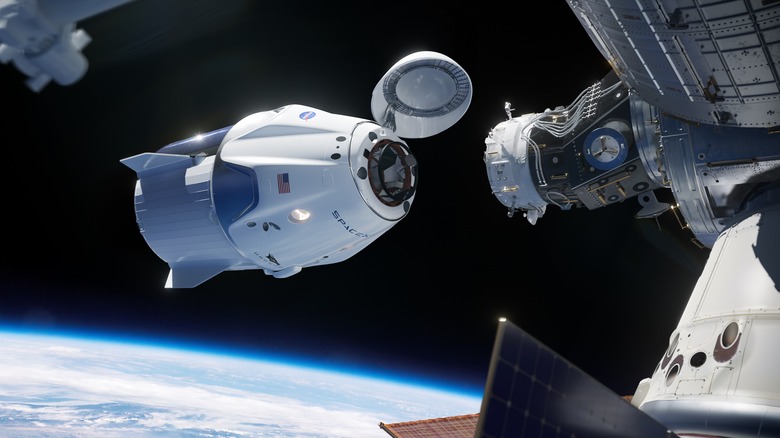Here's What NASA Astronauts Are Saying About SpaceX's Crew Dragon
- NASA astronauts dish on the Crew Dragon ride to the International Space Station, including how it felt compared to the Space Shuttle.
- Astronauts Douglas Hurley and Robert Behnken said the spacecraft worked well and ISS commander Chris Cassidy said it was like a new car.
- The astronauts will remain in space for up to several months.
By now you've seen the history-making SpaceX/NASA launch of the Crew Dragon, but views from the outside of the spacecraft as it cruised skyward don't offer a clue as to what it felt like for the astronauts who were actually inside it. In an interview with reporters on Monday, astronauts Douglas Hurley and Robert Behnken were happy to share their experience as the first humans to travel into space in SpaceX's shiny new spacecraft.
So what was it like? Apparently pretty nice, according to the two men, and it even had the classic "new car smell," according to Chris Cassidy, the current commander of the International Space Station.
The International Space Station and most of the vehicles that travel to it are, well, old. They're incredible machines, but most have been around for a very long time. The Crew Dragon is, in contrast, brand-spanking-new. It's sleek and clean and ultra-high-tech, and the duo that flew in it weren't the only ones that were impressed with it.
"Then when we got that hatch open, you could tell it was a brand new vehicle, with smiley faces on the other side, smiley face on mine, just as if you had bought a new car, the same kind of reaction," Cassidy gushed during the interview.
It was fitting that the two astronauts to make the maiden voyage in Crew Dragon were Hurley and Behnken, as both men have spent time aboard the Space Shuttle and could offer a direct comparison between what that experience was like and how it felt to ride in the Crew Dragon.
"Shuttle had solid rocket boosters, those burned very rough for the first two-and-a-half minutes," Hurley explained. "The first stage with Falcon 9 was a much smoother ride."
"So the first stage engines shut off, and then it took some time between the booster separating and then the Merlin vacuum engine starting," Hurley told reporters. "At that point, we go from roughly three Gs to zero Gs for, I don't know, a half a second probably, and then when that Merlin vacuum engine fires, then we start accelerating again.
Hurley noted that the Merlin engine produced generated some turbulence inside the vehicle. "It got a little rougher with the Merlin vacuum engine, and it'll be interesting to talk to the SpaceX folks to find out why it was a little bit rougher ride on second stage than it was for shuttle on those three main engines."
The spacecraft and its two astronauts will remain on the ISS for as long as several months. NASA is still deciding how long it wants the duo to remain in space, but SpaceX is surely eager to get Crew Dragon back home and complete its certification.
